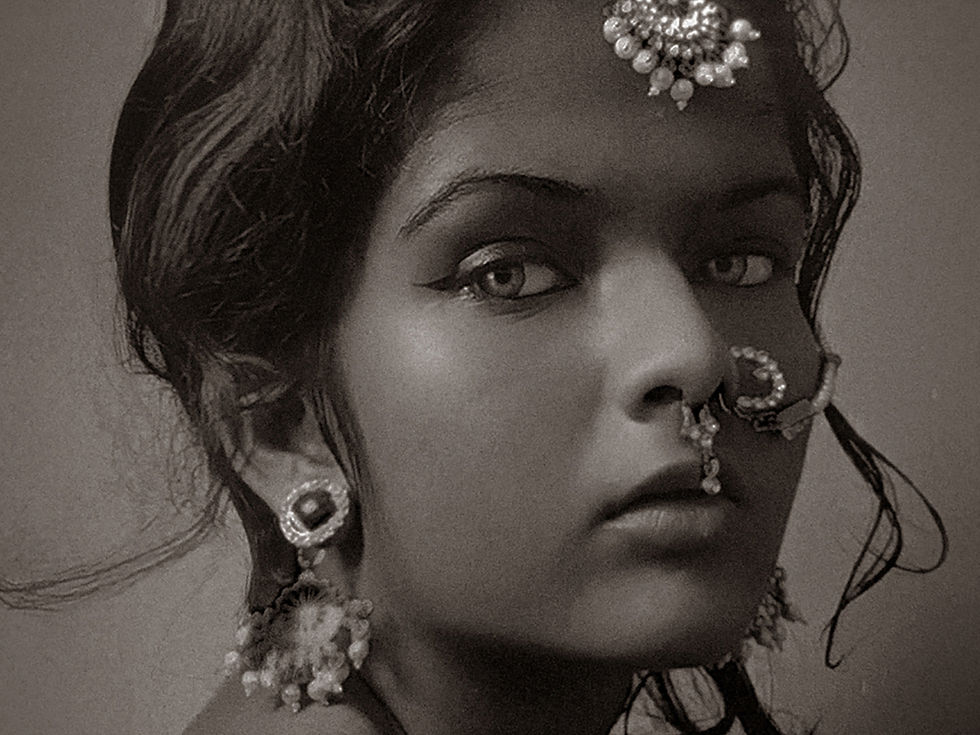The Difference Between Aesthetic Art and Emotional Art (And Why Both Matter)
- Maitreyi More
- Jul 23
- 3 min read
Updated: Nov 28
In the age of perfectly curated Instagram grids and gallery-ready visuals, it’s easy to assume that all art exists to “look good.” But if you’ve ever stood in front of a piece that felt like it was staring back into your soul, you know there’s more to art than just aesthetics.
Let’s talk about the difference between aesthetic art and emotional art, and why the world needs both.
What is Aesthetic Art?
Aesthetic art focuses on visual beauty, harmony, composition, and style. Think clean lines, striking colors, balanced forms, or anything that feels pleasing to the eye. It often celebrates design, technique, and surface-level appeal.
It’s the art you want to hang in your living room. It’s what makes you say, “Wow, that’s gorgeous.”
Aesthetic art often isn’t trying to provoke a deep emotional response, it’s more about admiration than introspection. But that doesn’t make it shallow. Crafting aesthetic beauty takes tremendous skill, sensitivity, and precision.
What is Emotional Art?
Emotional art is all about feeling over form. It’s raw, sometimes messy, and often makes you a little uncomfortable in the best way. This kind of art communicates an inner truth, grief, rage, vulnerability, hope, love, loss through visuals that aren’t always conventionally “beautiful.”
It’s the art that makes you pause. That stays with you. That whispers (or screams), “You’re not alone.”
Emotional art might not be symmetrical, colorful, or technically perfect, but it connects. Deeply. Why Both Aesthetic and Emotional Art Matter:
The art world often creates a false divide, technical beauty vs. emotional truth, gallery art vs. personal expression, "pretty" vs. "powerful." But this division ignores how deeply intertwined aesthetic and emotional experiences really are.
1. We Experience the World Visually and Emotionally
Humans are wired to respond to both beauty and meaning. Aesthetic elements like color, light, texture, and composition draw us in, they engage the senses. Emotional content holds us there, it resonates, provokes, and lingers in memory.
When we encounter art that blends both, something clicks. We don’t just say, “That looks amazing. ”We say, “That means something to me.”
2. Aesthetic Art Offers Comfort and Escape
In a world full of chaos, beauty matters. Art that focuses on aesthetics can uplift, inspire, and offer a sense of calm. Just like music without lyrics, visual harmony can make us feel good without needing explanation.
Sometimes, people turn to art not to process pain, but to experience lightness, fantasy, balance or simply visual pleasure.
3. Emotional Art Creates Connection and Healing
On the other hand, emotional art provides a space for honesty, catharsis, and shared experience. It reflects the complexities we often can’t put into words. Even if the image is uncomfortable or abstract, viewers feel a sense of recognition, like someone else understands what they're going through.
4. Together, They Make Art Timeless
Some of the most iconic artworks in history, Frida Kahlo’s haunting portraits, Van Gogh’s trembling skies, even Dali’s surreal worlds have both a striking aesthetic and a deep emotional core. They are beautiful to behold, but unforgettable because they say something.
In today’s fast-scrolling world, aesthetic art grabs attention. But emotional art makes people stay.
So… Which One Should You Make?
Ask yourself:
Do you want your audience to admire your work or feel it?
Are you expressing your truth or exploring visual design?
Can you combine both crafting something beautifully broken or gorgeously gut-wrenching?
There’s no wrong answer. Some days, you might want to build a dreamscape. Other days, you might want to spill your shadow on canvas. Both are art. Both are honest. Both matter.
Final Thoughts
Aesthetic art asks you to look. Emotional art asks you to feel. Great art does both.
And as an artist, you don’t have to choose. You just have to show up truthfully.




Comments